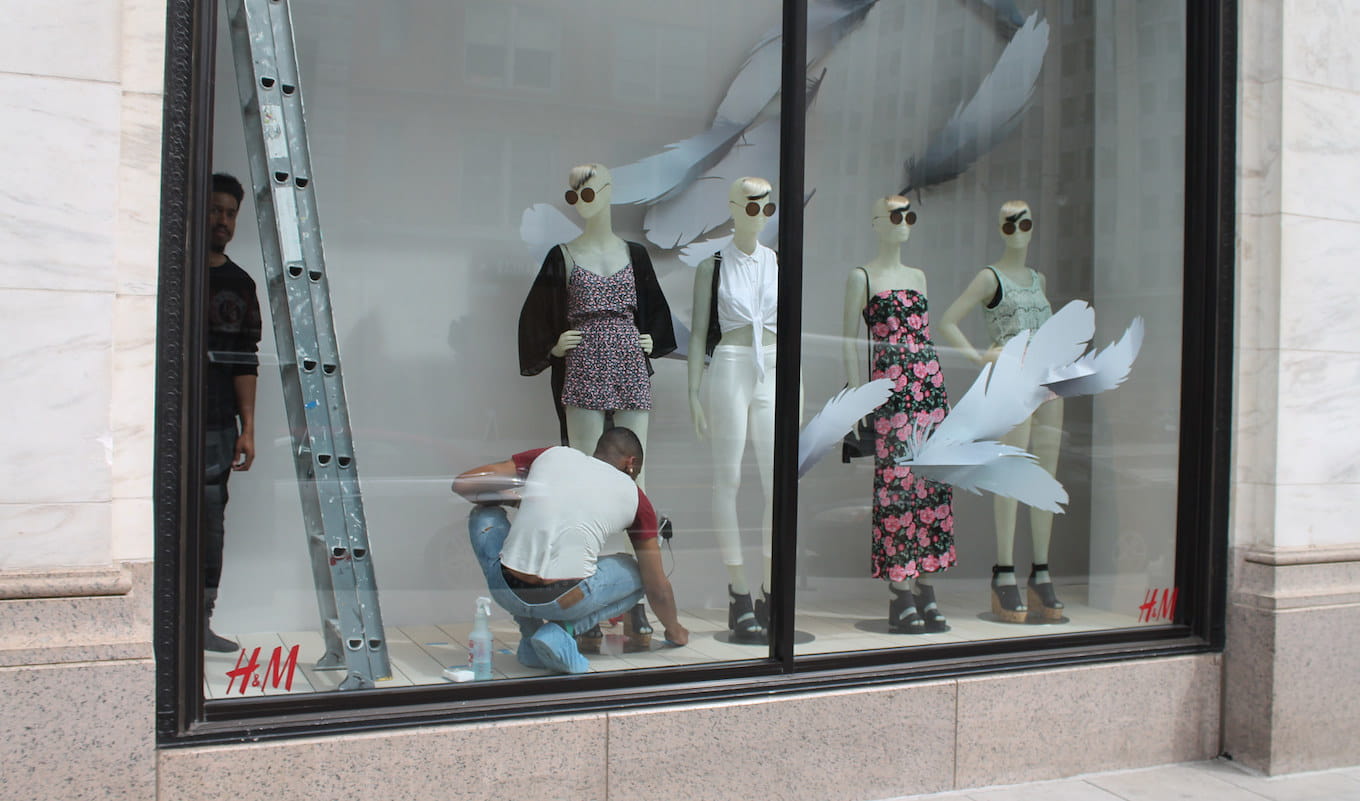In today’s digital age, attracting customers to step through your doors is harder than ever. Year-over-year foot traffic to brick-and-mortar stores has declined 48 straight months, according to data analytics firm RetailNext.
All signs point towards eCommerce sales remaining strong, so it’s important to put even more effort in drawing shoppers inside your storefront. What better way to do that than to create an eye-catching window display?
Here are five questions to ask in order to make your behind-the-glass presentation pop.
1. What story do you want to tell?
Many retailers decorate their windows to correspond directly to the season or a holiday. In other words, they’ll only feature red clothing for Valentine’s Day and put up a lit evergreen for Christmas. But smart business owners avoid a simplistic design like this.
To stand out from your retail neighbors, choose a theme. Think: “The dog days of summer,” “A Hawaiian Luau,” or “Beat the heat” during summer months. During autumn and winter, consider “Falling for you,” “Inside the snow globe,” or “Auld Lang Syne.” Combine products from your store with inexpensive objects you might have lying around to create an engaging visual scene.
2. On what level should items be placed?
There are adult shoppers and kid shoppers, tall ones and short ones. Ideally, your windows will have something for everyone, so decorate from floor to ceiling. Create a focal point by placing the majority of items at eye level of the average adult. (Keep in mind that eye level when someone is standing outside might not be the same as eye level inside; some windows are raised.) If you sell children’s items, place them near ground level. If you don’t, decorate with items that kids will find intriguing. Finally, don’t forget to hang something from the top of your window display.
3. How long will the display remain up?
Creating a window scene is a lot of work, but customers do not want to see the same decorations over and over and over again. Switching things up keeps your storefront exciting, especially for repeat clients. If you own a business that customers frequent often, like a café or coffee shop, make a small tweak to your visual display—add an item, take something away, move a product to a different spot in the tableau—every couple of days so it doesn’t get stale. For businesses that have a clientele that only visits every few weeks, be sure to freshen your windows on a similar schedule.
4. Will the window look good if photographed for social media?
You want your window display to be ready for its Snapchat or Instagram close-up. After all, social media is free advertising when people post photos of your scene on their feed. Experts suggest installing lighting that matches the rest of your business—using similar color lighting connects the display and the interior to create a cohesive look. (Lighting that contrasts will be jarring and will induce a feeling of disconnectedness.) The use of tabletop lamps and Christmas lights can help create a cozy feeling as well.
5. How much product is too much?
You want your window to look polished, not haphazard or cluttered. Stores shouldn’t feature their entire inventory in a display. Customers won’t know what to focus on if there’s too many items crammed into the small space. Instead, showcase just a few items at eye level, along with some smart signage—giving shoppers just enough of a glimpse that they want to walk through the door.
Have questions about the Clover product line? Contact a Clover rep today.
[image:
WindowDresser34.HM.Downtown.WDC.15April2015 by Elvert Barnes on flickr]






